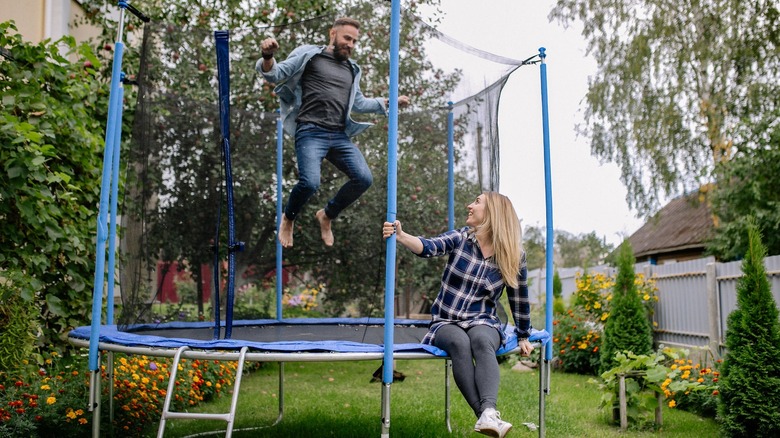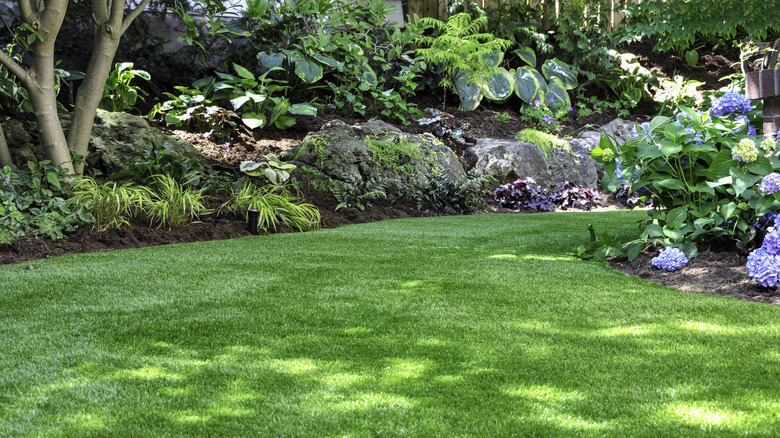Can You Really Use A Trampoline To Keep Your Lawn Green?
Trampolines are a fun addition to yards for people with children but are often thought to kill the grass beneath them. While this is true, and the weight of the trampoline as well as the shade it provides, can turn grass brown or yellow, it will sometimes actually make it easier for the grass to grow. This completely depends on the climate you live in, the type of grass, and where you keep your trampoline.
For those who live in hotter climates with intense sunlight, putting your trampoline over patches of dying grass can help bring it back to life. This occurs not only because of the added shade blocking harsh UV rays but because it can help the soil retain moisture and keep the grass healthy. If you live in a colder climate or if your yard already has a fair amount of shade, your trampoline may block the grass from getting enough sunlight, causing it to die.
How to keep your grass healthy with a trampoline
In a TikTok video posted by @chrisundertaking, it's explained that moving a trampoline over patches of grass that may need to be reseeded during hot weather will help the grass grow back. The most effective way for this hack to work is to move your trampoline regularly. This will keep the grass in one spot from growing rapidly while other areas are drying out in the sun and will also prevent the weight of the trampoline from killing the grass beneath it. If you have trouble remembering to relocate your trampoline, try moving it every time your mow your lawn.
If you move your trampoline to a shadier spot and notice the grass begins to die, simply move it to another area of the yard that looks like it could use some shade. Whether you live in a cooler or hotter climate, frequently relocating your trampoline will either help the grass beneath it grow or keep it from dying.
How different types of grass respond to shade
Depending on what kind of grass grows in your yard, it will need varying amounts of sunlight. While many types of grass will need four or more hours of light to thrive, some species do well with indirect sunlight. Fine and tall fescues, as well as ryegrass, are varieties that tend to like being in the shade, while St. Augustine and zoysia grasses will tolerate partial shade. Some yards have multiple kinds of grass mixed together, so the easiest way to determine if your trampoline will help or hurt is by observing how your grass responds to shade versus intense sunlight.
While it is possible for your trampoline to help you keep your lawn luscious and green, this will not be the case for every yard. If your area experiences harsh sunlight and high temperatures, using your trampoline to shield your grass is a great idea, but if not, you may need to find another way to keep your grass green.

